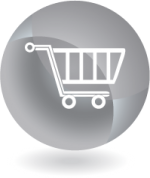 How Efficient is your eCommerce Store?
How Efficient is your eCommerce Store?
By Logicbroker | January 27, 2014
In 1979, Michael Aldrich connected a modified domestic television set to a phone line, and online shopping was born. It is safe to say that the  world of eCommerce has come a long way since its invention, and has continued to rise in popularity. eRetail will grow to 9% in 2016, up from 7% today. By having a store that is efficient, you can make the most of the rise in eCommerce popularity. So, how efficient is your eCommerce store?
world of eCommerce has come a long way since its invention, and has continued to rise in popularity. eRetail will grow to 9% in 2016, up from 7% today. By having a store that is efficient, you can make the most of the rise in eCommerce popularity. So, how efficient is your eCommerce store?
SEO: A study performed by KISSmetrics noticed that 30.5% of all traffic was coming from organic searches. That is a significant amount of traffic, so it is important that your site has a good SEO score:
- Avoid duplicate content. Posting the same content under multiple categories causes confusion (same URL). It’s also worth noting that search engines have a difficult time deciding which placement is most relevant in the search query.
- Use a tool like Google Analytics to track visitor’s activities on your site and determine your strengths and weaknesses.
- Post relevant content. Without product text, it is very difficult to rank and thus drive search traffic to eCommerce stores.
Clean & Clear Site: As is the case with most booming industries, the eCommerce space is incredibly competitive. Having a website that is easy to navigate and has pages that load quickly, you have a better chance of having visitors shop your site. Google recommends having your load time to be under 2 seconds.
The 5 Second Rule: You’ll also want visitors to understand the message of your company and a general overview of what they can expect to find within 5 seconds of landing on your home page. A cluttered landing page with too much information can confuse and overwhelm visitors, and prompt them to do their shopping elsewhere. By communicating clearly what a visitor’s next steps should be, you increase the likelihood of consumers staying and shopping around your site.
The Right Platform: Using the right eCommerce platforms to run your business is crucial. For Magento users, based on budget and the user’s tech-savviness determines if the Community or Enterprise edition is the right fit. Shopping carts leverage different tools and some are industry specific. Based on your yearly revenue and the number of transactions you have influences whether you should be on QuickBooks or upgrading to an ERP system. You’ll also want to stay on top of upgrades available for your system. Upgrading is not typically a necessity, but after a certain amount of time, support for older versions is discontinued.
Product Photos: When you sell online, product images are essentially your products. Having high-quality images are a crucial part of your business. Since consumers cannot see your products in person, you’ll want to include images that display the different angles and views of the product. You’ll want to ensure your product descriptions contain enough information for a visitor to feel confident in placing their order. Product dimensions, weight, and colors (you’ll want to show the item in each color) should be included. This gives your potential customers the next best thing to experiencing the item in person.
Ensuring that your eCommerce site is efficient is a great way to tap into a larger share of the market. It is also worth noting that approximately 46% of online users count on social media when making a purchase decision. Strengthening your social media presence along with following the tips listed above can help you maintain a competitive edge in the growing eCommerce ecosystem.
Modern dropship & marketplace solutions have never been so easy.
Are you ready to drive growth and gain unparalleled speed to market with a modern, scalable dropship or marketplace program? Fill out the form below to get in touch with our team: